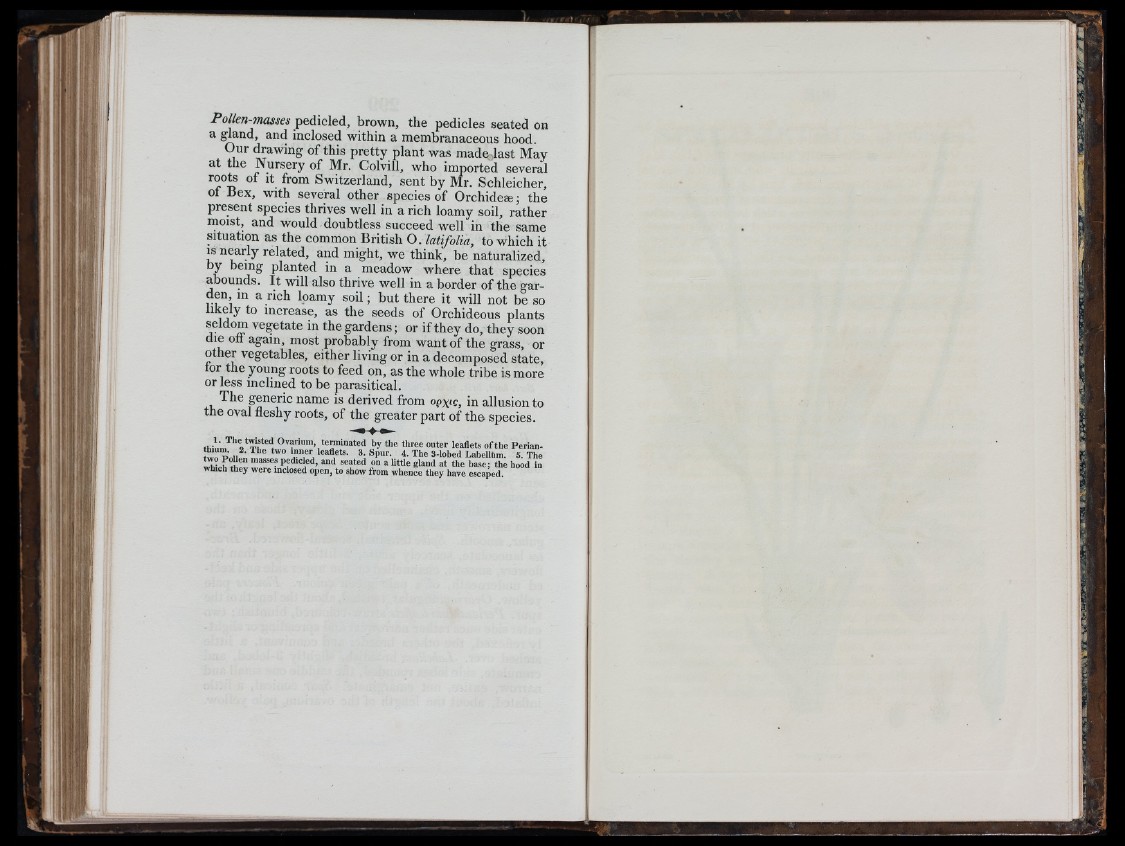
Pollen-masses y&dicled, brown, the pedicles seated on
a gland, and inclosed within a membranaceous hood
Our drawing of this pretty plant was made last May
at the Nursery of Mr. Colvill, who imported several
roots of It from Switzerland, sent by Mr. Schleicher,
ot Bex, with several other species of Orchideae; the
present species thrives well in a rich loamy soil, rather
moist, and would doubtless succeed well in the same
ptuation as the common British O. latifolia, to which it
IS nearly related, and might, we think, be naturalized,
n planted in a meadow where that species
abounds. It will also thrive well in a border of the garden
m a rich loamy so il; but there it will not be so
likely to increase, as the seeds of Orchideous plants
seldom vegetate in the gardens; or if they do, they soon
die otf again, most probably from want of the grass, or
other vegetables, either living or in a decomposed state,
tor the young roots to feed on, as the whole tribe is more
or less inclined to be parasitical.
The generic name is derived from opxte, in allusion to
the oval fleshy roots, of the greater part of the species.
thiiini^'‘ 9 " T h w tenninated by tbe tbree outer leaflets o f the Perianiwn
PntlpA i f T I *• Labellüm. 5. The
H t n f t *®? »"<1 s'^ated on a little gland at the base; the hood in
Winch they were inclosed open, to show from whence they have escaped.